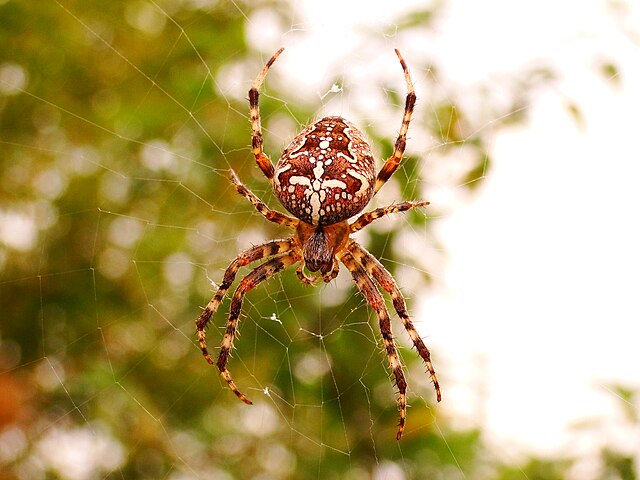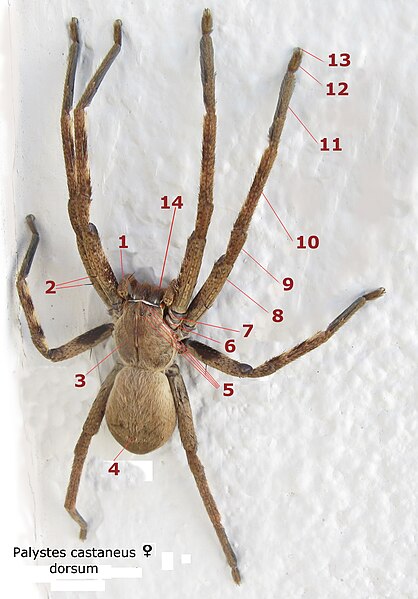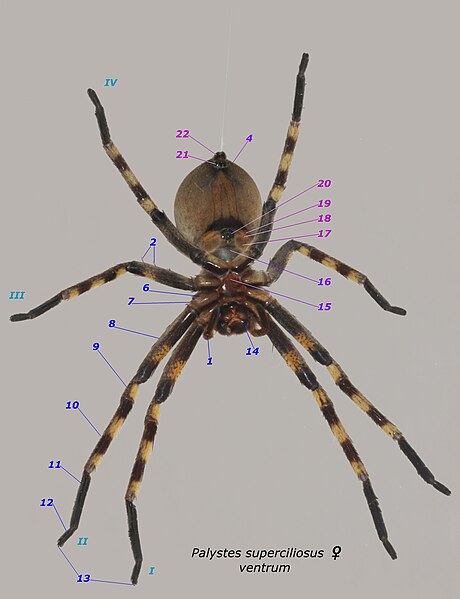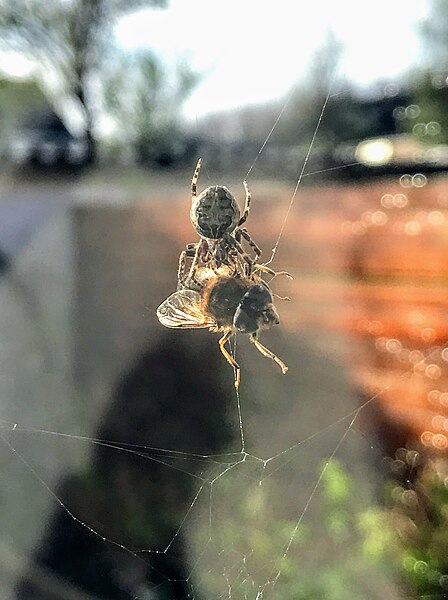The spider species Araneus diadematus is commonly called the European garden spider, cross orbweaver, diadem spider, orangie, cross spider, and crowned orb weaver. It is sometimes called the pumpkin spider, although this name is also used for a different species, Araneus marmoreus. It is an orb-weaver spider found in Europe, where it is native, and North America, where it was introduced.
Image: Araneus diadematus MHNT Femelle Fronton
Image: Araneus diadematus. Male Flickr gailhampshire (1)
Female, orange-brown colour variant
On its web, showing the markings on its abdomen
Spiders are air-breathing arthropods that have eight limbs, chelicerae with fangs generally able to inject venom, and spinnerets that extrude silk. They are the largest order of arachnids and rank seventh in total species diversity among all orders of organisms. Spiders are found worldwide on every continent except Antarctica, and have become established in nearly every land habitat. As of November 2023, 51,673 spider species in 136 families have been recorded by taxonomists. However, there has been debate among scientists about how families should be classified, with over 20 different classifications proposed since 1900.
Spider
Palystes castaneus female, dorsal aspect pedipalp trichobothria carapace of prosoma (cephalothorax) opisthosoma (abdomen) eyes AL (anterior lateral) AM (anterior median) PL (posterior lateral) PM (posterior median) Leg segments: coxa trochanter femur patella tibia metatarsus tarsus claw chelicera
Palystes castaneus female, ventral aspect. Nos 1 to 14 as for dorsal aspect. sternum of prosoma pedicel (also called pedicle) book lung sac book lung stigma epigastric fold epigyne anterior spinneret posterior spinneret Legs are labelled I, II, III, IV from anterior to posterior.
A syrphid fly captured in the web of a spider








